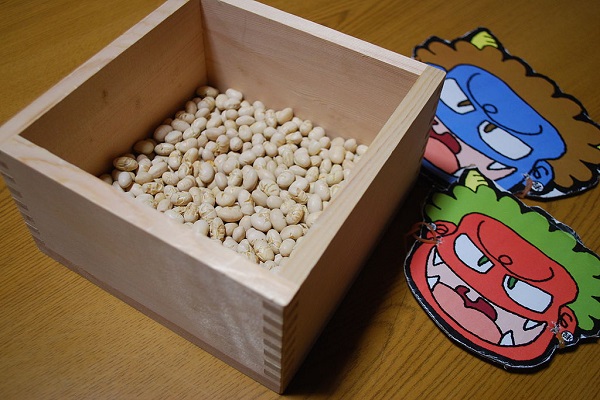
The Japanese Setsubun: New Year’s Bean Throwing Celebration
- By Kelly Frazier --
- 02 Feb 2016 --

Traditions of Japan’s Setsubun
On February 3, the Japanese people will be celebrating its annual Setsubun tradition as part of the upcoming Spring Festival. The word Setsubun means “seasonal division” and is the generic term used for the transitions of the four seasons (winter, spring, summer and fall). But as time goes by, Japanese customs and tradition has mainly associated it with spring. Specifically, Setsubun refers to the eve of spring’s first day.
The Japanese Setsubun: New Year’s Bean Throwing Celebration[/tweetthis]
Historically, Setsubun is essentially a New Year’s Day celebration. The Japanese believed that the New Year is the time of the year when evils or demons coming from the spirit world lingers close to the living or human world. This gave rise to the mame-maki tradition which aims to drive away evil spirits and bring good luck for the coming year.
The mame-maki tradition
The mame-maki or bean-throwing ceremony is the main activity associated with Setsubun. It is practiced across the country although some parts have their own variations of the custom. This practice is carried out at religious shrines and temples and at individual homes. Before the activity starts, a person will wear a costume or mask and will act as the evil spirit. Assigned individuals and participants prepare roasted soybeans and will then throw them at various areas of the house or directly at the evil spirit while chanting “Out with demons!”
The act of driving away the evil spirits aims to cleanse the home from any misfortune, bad luck, as well as ill health. And to induce luck, all individuals eat roasted soybeans in the same number with their age. Often, they add an extra soybean for the coming year’s fortune.
Mame-maki held at shrines and temples are more extravagant which is usually due to the larger crowd and presence of special guests. Additionally, sweets, candies, gifts, and envelopes containing money are given to the crowd aside from the roasted soybean.
In the absence of soybeans, peanuts are becoming an acceptable substitute nowadays.
Other Setsubun customs or activities
Aside from mame-maki or bean-throwing, there are other customs or activities performed during Setsubun which include: the yakikagashi, eating of uncut makizushi, role reversal and the morality plays by the tabi geinin.
The yakikagashi or yaikagashi involves the hanging of grilled sardine heads placed in a holly branch all over the house’s entry points. Similar to mame-maki, this aims to ward off evil spirits due to the sardine’s strong smell and of the holly’s thorns.
Eating uncut makizushi silently facing the coming year’s lucky direction is also believed to bring in good luck. The “roll” in the sushi roll symbolizes rolling fortune and the idea of not cutting it symbolizes uncut relationships and blessings.
Some locals also practice role reversal during Setsubun. On this special and fun day, young children dress and wear old hair and makeup while the seniors act as young children. Cross-dressing between genders is also present and the wearing of disguises.
Finally, the tabi geinin or travelling entertainers who are usually casted away by the society are allowed to perform morality plays. They are accepted particularly during the Setsubun because people believe that they eventually carry with them the evil spirits when they leave.
I got the Doraemon sushi roll for Setsubun! I know why they call it the Doraemon roll, there's Doriyaki inside! pic.twitter.com/E0PJt2uLoZ
— capsulebunny (@capsulebutt) February 1, 2016


















